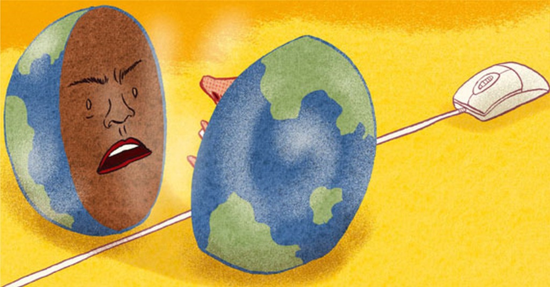
The digital divide refers to the unequal distribution of access to technology and the internet between different populations, often based on socio-economic status, geographic location, and other factors. In low- and middle-income countries (LMICs), this divide can have significant impacts on social and economic development.
Social Digital Divide
On the social side, limited access to technology and the internet can result in a lack of connectivity, information, and opportunities. For example, people who live in rural areas or have low incomes may be less likely to have access to online educational resources, which can limit their ability to acquire new skills and knowledge.
The lack of access to technology can also make it difficult for people in LMICs to participate in online communities and to connect with others who have similar interests or experiences.
Economic Digital Divide
On the economic side, the digital divide can limit the ability of individuals and businesses in LMICs to participate in the digital economy. For example, small businesses may struggle to compete with larger companies that have greater resources and access to technology.
This can limit their ability to reach new markets, sell their products and services, and grow their businesses. The digital divide can also limit the ability of workers in LMICs to participate in the global workforce and to take advantage of remote work opportunities.
Digital Divide Impact
The digital divide can create a vicious cycle, in which those without access to technology and the internet are left behind, unable to acquire the skills and knowledge necessary to participate in the digital economy and to achieve economic and social progress.
It is therefore important for governments, international organizations, and private sector companies to work together to close the digital divide in LMICs and to ensure that everyone has access to the technology and information they need to thrive in the digital age.
On the balcony of a building facing the road to Pattamadai in Tamil Nadu, four Pattupai artisans gathered at midday to meet Digital Empowerment Foundation’s...
For artisans like Kohinoor Khatoon, becoming a digital entrepreneur is a milestone, not the journey’s end. While digital access is opening doors in the villages...
Priyanka Praminik was running a computer center in Islampur, West Bengal, when the Digital Empowerment Foundation’s district coordinator approached Priyanka...
As I sit among women from the Kasba Sangha Mahila Self Help Group Cooperative Society in West Bengal, I ask what single factor shapes a woman’s entrepreneurial...
Published on: Sep 05 2025 by Manisha Aryal - Comments Off on People, Not Technology, are Bridges Across Digital Divides
Deep digital divides exist in India’s Assam tea plantations, where nearly 7 million Adivasi workers labor daily. These tribal communities live in stark poverty.
Dismissed...
I am Manisha Aryal. I am advising the Digital Empowerment Foundation on technology. Recently, I found myself in the rugged mountains of Uttarakhand, India — a...
Published on: Jan 08 2025 by Guest Writer - Comments Off on How We Can Use Independent Digital Connectivity to Close the Gender Digital Divide
The persistent gender divide in digital capabilities remains a critical barrier to inclusive economic development in low- and middle-income countries (LMICs). “Engendering...
In an era where Internet connectivity is pivotal for socio-economic development, Malawi’s government has embarked on a transformative journey through the...
Published on: Aug 22 2024 by Guest Writer - Comments Off on 6 Principles for Gender Equitable Artificial Intelligence Solutions
Artificial intelligence and machine learning based solutions hold a promise of becoming a transformative force in multiple facets of humanitarian and development...
Community networks are Internet communication networks deployed and operated by citizens to meet their own needs. In recent years, the community networks movement...












